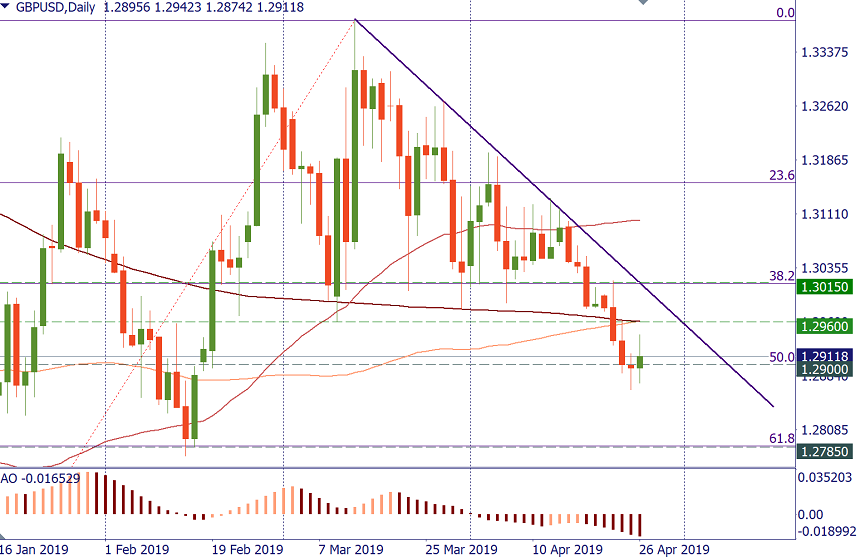The fundamental outlook for the GBP
After testing 1.3380 in March, GBP/USD turned down. Last week, the pound fell below the 200-day MA at 1.2960.
The European Union agreed to postpone Brexit until the end of October. How will this decision influence the GBP in the coming weeks and months?
Politics
All in all, the extension of Brexit is mildly positive for the pound. After all, Britain managed to escape the no-deal exit that would be the worst-case option. The pound would have plunged if Britain left the EU without an agreement. At the same time, the country is now obviously in the situation of uncertainty. The lack of clearness about its future weighs on the GBP.
There’s talk that Prime Minister Theresa May can try to have another go at making the parliament support her proposed EU withdrawal plan. The lawmakers can’t vote again on the same bill within a session, but she may lay out a different bill that would give legal effect to the terms of the withdrawal agreement. In any case, besides this procedural issue, May still lacks the support of the opposition Labour Party and many members of her own Conservative Party as well.
May’s popularity is low, and she will likely struggle to find a solution. In addition, there will be local elections in Britain on Thursday, May 2. There’s a big risk that voters will desert the ruling conservatives. In this case, the GBP will suffer.
Economics
So far, the UK economy has been doing fine despite the grim forecasts of various analysts. The nation’s GDP continued growing in February as manufacturers rushed to stockpile goods before Brexit. Still, according to IMF, Britain will suffer economic damage equivalent to the loss of at least 2-3 years of normal growth between now and the end of 2021 if it leaves the EU without a deal.
Inflation has cooled off in Britain from 2.7% in August 2018 to 1.9% y/y in February. In March the situation was unchanged from the previous month. The Bank of England won’t be in a hurry to raise interest rates and will likely once again underline the necessity to solve the Brexit problem first. The BoE will also meet on May 2. As hawkish comments are unlikely, we don't expect the pound to enjoy any kind of positive impact of this event.
Conclusion: what awaits the pound?
As you can see, although the current picture isn’t too bad for the sterling, it surely doesn’t provide it with comfort. Outside of the UK, the stronger Q1 US GDP growth and the economic weakness in Europe represent bearish factors for the GBP. As a result, until there’s an agreement within the British parliament, the pound will likely stay under negative pressure. It might be quite difficult for it to return above 1.30. In the next few days GBP/USD will be vulnerable for a leg down to 1.28/1.2785.
